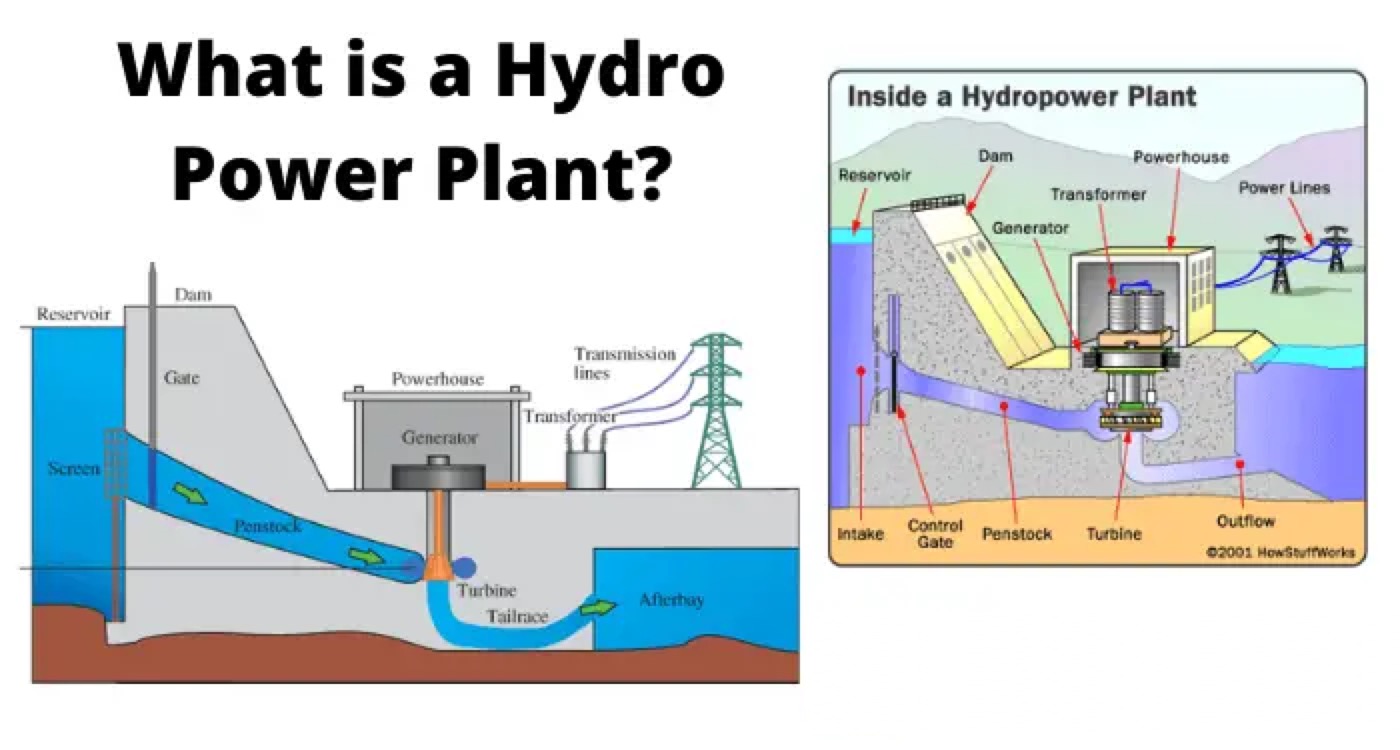Hydro Power Plant | Construction Working and History of Hydro power plant

In hydroelectric power station the kinetic energy developed due to gravity in a falling water from higher to lower head is utilised to rotate a turbine to produce electricity. The potential energy stored in the water at upper water level will release as kinetic energy when it falls to the lower water level. This turbine rotates when the following water strikes the turbine blades. To achieve a head difference of water hydroelectric electric power station are generally constructed in hilly areas. In the way of the river in hilly areas, an artificial dam is constructed to create required water head. From this dam water is allowed to fall toward downstream in a controlled way to turbine blades. As a result, the turbine rotates due to the water force applied to its blades and hence the alternator rotates since the turbine shaft is coupled with alternator shaft.
The main advantage of an electric power plant is that it does not require any fuel. It only requires water head which is naturally available after the construction of the required dam.
No fuel means no fuel cost, no combustion, no generation of flue gases, and no pollution in the atmosphere. Due to the absence of fuel combustion, the hydroelectric power plant itself is very neat and clean. In addition to that, it does not produce any pollution to the atmosphere. Also from constructional point of view, it is simpler than any thermal and nuclear power plant.
The constructional cost of a hydroelectric power plant maybe higher than that of other conventional thermal power plants because of construction of a huge dam across the flowing river. The engineering cost in addition to the constructional cost is also high in a hydroelectric power plant. Another disadvantage of this plant is that it cannot be constructed anywhere according to the load centres.
So, long transmission lines are required to transmit the generated power to the load centres.
Thus the transmission cost may be high enough.
In spite of that, the stored water in the dam can also be utilised for irrigation and any other similar purposes. Sometimes by creating such dam in the way of the river, occasional floods in the downstream of the river can be controlled significantly.

There are only six primary components required to construct a hydroelectric power plant. These are dam, pressure tunnel, surge tank, valve house, penstock, and powerhouse.
The dam is an artificial concrete barrier constructed across the way of the river. The catchment area behind the dam creates a huge water reservoir.
The pressure tunnel takes water from the dam to the valve house.
In the valve house, there are two types of valves available. The first one is main sluicing valve and the second one is an automatic isolating valve. The sluicing valves control the water flowing to the downstream and automatic isolating valves stop the water flow when the electrical load is suddenly thrown off from the plant. Automatic isolating valve is a protecting valve does not play any direct role control the flow of water to the turbine. It only operates during emergency to protect the system from burst out.
The penstock is a steel pipeline of suitable diameter connected between the valve house and powerhouse. The water flows down from upper valve house to lower powerhouse through this penstock only.
In the powerhouse there are water turbines and alternators with associated step up transformers and switchgear systems to generate and then facilitate transmission of electricity.
At last, we will come to the surge tank. The surge tank is also a protective accessory associated with hydroelectric power plant. It is situated just before the valve house. The height of the tank must be greater than the head of the water stored in the water reservoir behind the dam. This is an open top water tank.
The purpose of this tank is to protect the penstock from bursting out when suddenly turbine refuses to take water. At the entry point of turbines, there are turbine gates control by governors. The governor opens or closes the turbine gates according to the fluctuation of the electrical load. If the electrical load is suddenly thrown off from the plant, the governor closes the turbine gates and water is blocked in the penstock. Sudden stopping of water can cause a serious burst of penstock pipeline. The surge tank absorbs this back pressure by swing the level water in this tank.
Statement: Respect the original, good articles worth sharing, if there is infringement please contact delete.
Electrical Operations provides detailed insights into safe and efficient electrical procedures, guiding practitioners through every step of handling electrical systems.













